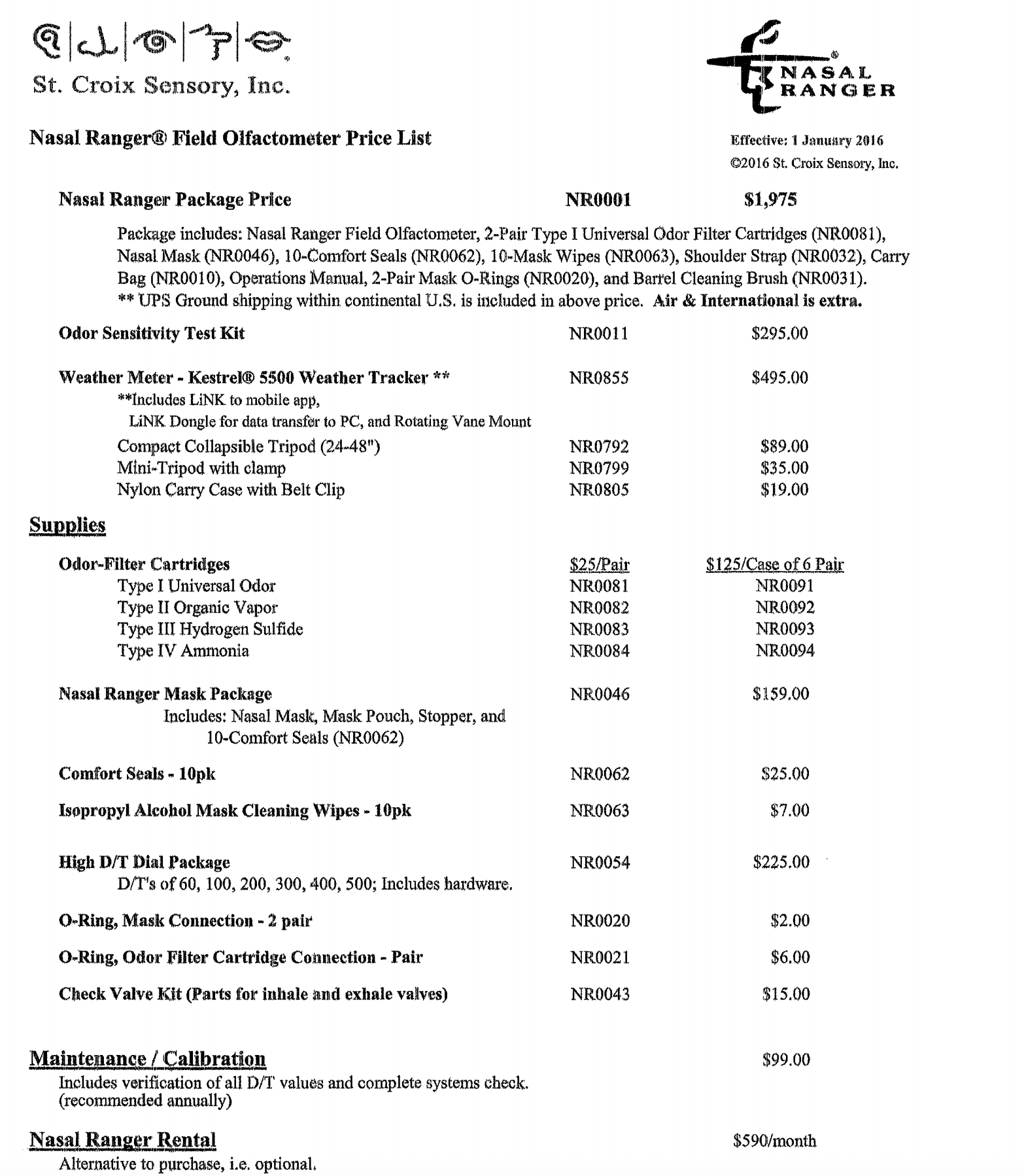For a few thousand dollars, cities are purchasing a device that bears striking resemblance to the Smell-O-Scope from the TV series Futurama to sniff out weed and fine smokers and growers if the scent produced is too strong.
The Nasal Ranger, a field olfactometer advertised as allowing users to conduct “complete odor monitoring, regulation, enforcement and documentation,” has been employed by officials in Denver and Las Vegas. Correspondence obtained by Motherboard via a freedom of information request between officials in one Michigan city and St. Croix Sensory, the company that manufactures the Nasal Ranger, shows that cities are interested in the device for one smell in particular: weed.
According to documents obtained by Motherboard, Bessemer, Michigan City Manager Charly Loper reached out to St. Croix Sensory in 2017 and stated that she was interested in the Nasal Ranger “for detection of smells such as marijuana.”
Though the Bessemer City Council voted in January to approve the purchase of a Nasal Ranger, Loper said in an email that officials remained uncertain if they will buy it. “We are currently exploring all options and are having a round-table discussion next Wednesday to brainstorm with the community,” she said. At the vote, Loper said that the code enforcement officer, a city employee, would undergo the training to operate the Nasal Ranger.

A week after the vote, Bessemer City Mayor Pro Tempore Terry Kryshak restated the city's intentions for the device in response to being sent a High Times article detailing Denver’s policy on strong odors. The article noted that in Denver, five or more complaints within a 12-hour period about the same odor source could led to the owner of the source being fined anywhere from $150 to $2,000. At least nine other states regulate the emission of strong odors, which might come from chemical plants, waste treatment facilities, or manufacturing centers.
“This is a very positive endorsement to get the nasal ranger…I really like the 5 complaint fine level,” Kryshak wrote in a January 13 email obtained by Motherboard. “As I said previously, I have no issue with users and/or growers, it is the grow odor and they can solve it with filters and timing.”
Price quotes in documents viewed by Motherboard show that the Nasal Ranger would set a buyer back $1,975. Adding a recommended $975 3.5-hour training seminar, a $295 odor sensitivity test kit, and a $99 maintenance/calibration fee (recommended annually) means buyers could end up paying over $3,000. Alternatively, one could rent the Nasal Ranger for $590 per month.

The gadget was introduced in 2002, but it is receiving renewed attention due to the legalization of recreational marijuana use in 11 U.S. states and the odors that come along with the industry. In 2018, Michigan voted to legalize recreational marijuana, and the proposal went into effect in 2019. Last month, recreational sales hit an all-time high of $9.8 million across the state.
“A facility of thousands of plants has a strong smell, and has a smell that has tended to lead to complaints in neighborhoods,” St. Croix Sensory Laboratory Manager Michael McGinley told VICE in 2019. “We’ve seen a lot of use by both facilities monitoring and understanding their smells for their neighbors, but also in other cases, cities and states that are using the tool as a regulation option for the smells.”
The Nasal Ranger is shaped like a hairdryer, and the user places their nose where the nozzle would be. They then inhale, drawing air through filters on either side of the device and directly from the environment through an adjustable hole at the back. This way, an offending smell can be diluted in the filtered air and quantified by the lowest concentration at which it can be perceived.
Many states consider a smell to be too smelly if it can still be perceived at a dilution of seven parts clean air to one part sampled air. Notably, the Nasal Ranger cannot differentiate between smells or determine the source of a smell. There's very little technological complexity going on here, compared to prototypes of weed breathalyzers.
In an email to the city council, Loper said that she tested the Nasal Ranger to "smell plants."
"While the smell was strong in the air," she said, "I couldn't detect it with the Nasal Ranger however, I have a poor sense of smell so I'm not planning on being trained for this."
Basically, it's a low-tech way to see if something is really, really smelly.
“Cannabis is just one of the nuisance odors communities are facing when it comes to odor regulation. Residential odor complaints also include urban chicken coops, woodburning stoves, compost piles, agricultural business and so on,” Marny Stebbins, marketing and sales manager at St. Croix Sensory, said in an email.
Charles McGinley, an expert in "odor management consulting," told the city that "the Nasal Ranger, as well as the original Scentometer, have seen many courtrooms and have been accepted as scientific."
At the time of the Bessemer vote to purchase the gadget, Council Member Linda Nelson told The Daily Globe, "The city of Bessemer stinks.”
“You can smell marijuana everywhere. We've got people who can't sit in their backyard because the smell from their neighbor is so bad.”
from VICE https://ift.tt/2T2ACLJ
via cheap web hosting
No comments:
Post a Comment